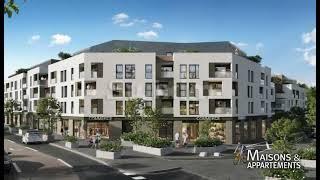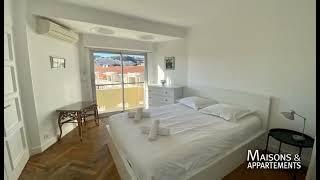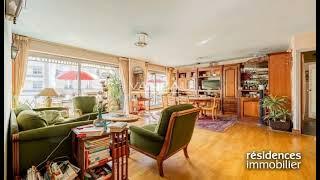This video shows a beautiful wooden jungle house in Canada.
Jungle House in Canada
When one thinks of Canada, images of vast forests, rugged mountains, and pristine lakes often come to mind. However, the concept of a jungle house in Canada may seem contradictory at first. Nevertheless, Canada's diverse ecosystems offer unique opportunities for nature enthusiasts and homeowners seeking a jungle-like retreat. In this article, we will explore the idea of a jungle house in Canada, discussing the potential locations, architectural elements, sustainability considerations, and the immersive experience it can offer.
Choosing the Location
While Canada is known for its cold winters, it is also home to several regions that boast a lush and verdant landscape, reminiscent of a jungle environment. Here are some potential locations where a jungle house in Canada could be situated:
1. West Coast Rainforests: British Columbia's coastal regions, including the Great Bear Rainforest and Vancouver Island, are known for their temperate rainforests. These areas receive abundant rainfall, fostering dense foliage and diverse ecosystems.
2. Southern Ontario: Certain areas in Southern Ontario, particularly the Niagara Escarpment and the Bruce Peninsula, are characterized by lush forests, deep valleys, and stunning waterfalls. These regions offer a unique blend of wilderness and accessibility.
3. Gulf Islands, British Columbia: Situated in the Strait of Georgia, the Gulf Islands are known for their mild climate, Mediterranean-like vegetation, and picturesque landscapes, providing an ideal setting for a jungle retreat.
Designing the Jungle House
Designing a jungle house in Canada requires careful consideration of architectural elements that blend seamlessly with the natural surroundings while offering a comfortable living space. Here are some key features to consider:
1. Integration with Nature: Emphasize a seamless connection between the interior and exterior spaces, incorporating large windows, sliding glass doors, and outdoor living areas to maximize views of the surrounding forest and create a feeling of immersion.
2. Green Roofs and Living Walls: Incorporating green roofs covered in vegetation and living walls adorned with plant life not only enhances the aesthetics but also contributes to the sustainability and insulation of the house.
3. Natural Materials: Use locally sourced natural materials such as timber, stone, and bamboo in the construction of the house to create a harmonious blend with the environment. Incorporate organic shapes and textures to mimic the organic forms found in nature.
4. Indoor-Outdoor Spaces: Design spacious terraces, balconies, and patios that provide opportunities for outdoor living and entertainment, allowing residents to enjoy the sights and sounds of the surrounding jungle-like environment.
Sustainability Considerations
Building a jungle house in Canada presents an opportunity to incorporate sustainable practices and minimize the environmental impact. Consider the following sustainability considerations:
1. Passive Design: Utilize passive design principles to maximize energy efficiency and reduce reliance on mechanical systems. Orient the house to optimize natural lighting, ventilation, and thermal comfort, minimizing the need for artificial heating and cooling.
2. Renewable Energy Sources: Install solar panels or small-scale wind turbines to generate clean energy, reducing reliance on traditional power sources. This helps decrease the environmental footprint of the house.
3. Rainwater Harvesting: Implement rainwater harvesting systems to collect and store rainwater for non-potable uses such as irrigation and toilet flushing. This reduces the demand for freshwater resources and promotes sustainability.
4. Efficient Insulation and Windows: Use high-quality insulation materials and energy-efficient windows to minimize heat loss during colder months and reduce the need for excessive heating.
The Immersive Experience
Living in a jungle house in Canada offers a unique and immersive experience. Imagine waking up to the sound of birds chirping, the sight of sunlight filtering through the canopy, and the fresh scent of the forest. The jungle-like environment provides a peaceful retreat and an opportunity to reconnect with nature. Residents can enjoy hiking through lush trails, observing wildlife, and discovering the beauty of the
#shorts #lifeincanada #canadavlog #torontovlog #torontolife #woodenhouse #junglehouse #lifeinjungle
Jungle House in Canada
When one thinks of Canada, images of vast forests, rugged mountains, and pristine lakes often come to mind. However, the concept of a jungle house in Canada may seem contradictory at first. Nevertheless, Canada's diverse ecosystems offer unique opportunities for nature enthusiasts and homeowners seeking a jungle-like retreat. In this article, we will explore the idea of a jungle house in Canada, discussing the potential locations, architectural elements, sustainability considerations, and the immersive experience it can offer.
Choosing the Location
While Canada is known for its cold winters, it is also home to several regions that boast a lush and verdant landscape, reminiscent of a jungle environment. Here are some potential locations where a jungle house in Canada could be situated:
1. West Coast Rainforests: British Columbia's coastal regions, including the Great Bear Rainforest and Vancouver Island, are known for their temperate rainforests. These areas receive abundant rainfall, fostering dense foliage and diverse ecosystems.
2. Southern Ontario: Certain areas in Southern Ontario, particularly the Niagara Escarpment and the Bruce Peninsula, are characterized by lush forests, deep valleys, and stunning waterfalls. These regions offer a unique blend of wilderness and accessibility.
3. Gulf Islands, British Columbia: Situated in the Strait of Georgia, the Gulf Islands are known for their mild climate, Mediterranean-like vegetation, and picturesque landscapes, providing an ideal setting for a jungle retreat.
Designing the Jungle House
Designing a jungle house in Canada requires careful consideration of architectural elements that blend seamlessly with the natural surroundings while offering a comfortable living space. Here are some key features to consider:
1. Integration with Nature: Emphasize a seamless connection between the interior and exterior spaces, incorporating large windows, sliding glass doors, and outdoor living areas to maximize views of the surrounding forest and create a feeling of immersion.
2. Green Roofs and Living Walls: Incorporating green roofs covered in vegetation and living walls adorned with plant life not only enhances the aesthetics but also contributes to the sustainability and insulation of the house.
3. Natural Materials: Use locally sourced natural materials such as timber, stone, and bamboo in the construction of the house to create a harmonious blend with the environment. Incorporate organic shapes and textures to mimic the organic forms found in nature.
4. Indoor-Outdoor Spaces: Design spacious terraces, balconies, and patios that provide opportunities for outdoor living and entertainment, allowing residents to enjoy the sights and sounds of the surrounding jungle-like environment.
Sustainability Considerations
Building a jungle house in Canada presents an opportunity to incorporate sustainable practices and minimize the environmental impact. Consider the following sustainability considerations:
1. Passive Design: Utilize passive design principles to maximize energy efficiency and reduce reliance on mechanical systems. Orient the house to optimize natural lighting, ventilation, and thermal comfort, minimizing the need for artificial heating and cooling.
2. Renewable Energy Sources: Install solar panels or small-scale wind turbines to generate clean energy, reducing reliance on traditional power sources. This helps decrease the environmental footprint of the house.
3. Rainwater Harvesting: Implement rainwater harvesting systems to collect and store rainwater for non-potable uses such as irrigation and toilet flushing. This reduces the demand for freshwater resources and promotes sustainability.
4. Efficient Insulation and Windows: Use high-quality insulation materials and energy-efficient windows to minimize heat loss during colder months and reduce the need for excessive heating.
The Immersive Experience
Living in a jungle house in Canada offers a unique and immersive experience. Imagine waking up to the sound of birds chirping, the sight of sunlight filtering through the canopy, and the fresh scent of the forest. The jungle-like environment provides a peaceful retreat and an opportunity to reconnect with nature. Residents can enjoy hiking through lush trails, observing wildlife, and discovering the beauty of the
#shorts #lifeincanada #canadavlog #torontovlog #torontolife #woodenhouse #junglehouse #lifeinjungle
- Catégories
- Location Maison à louer
- Mots-clés
- jungle, jungle house, canada



















Commentaires